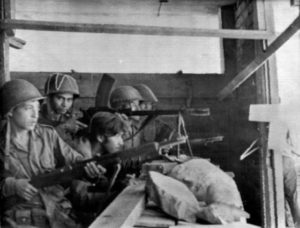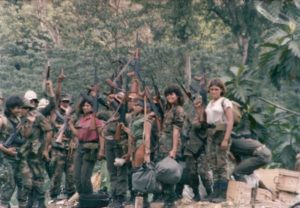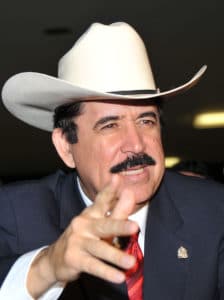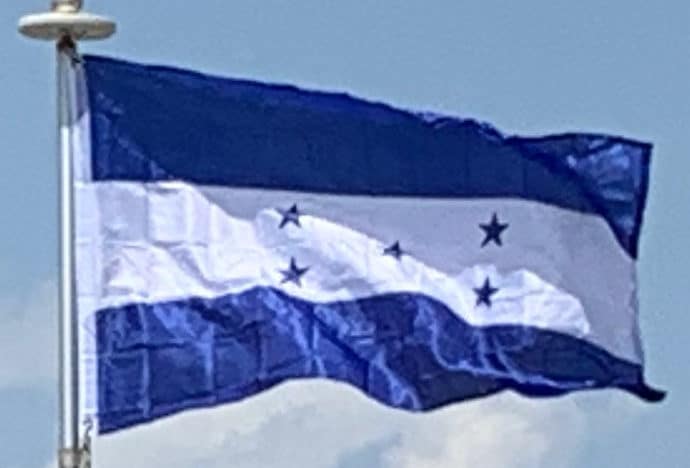Tensions escalated and on 14 July 1969, the Salvadoran army invaded Honduras. The Organization of American States (OAS) negotiated a cease-fire which took effect on 20 July and brought about a withdrawal of Salvadoran troops in early August. Contributing factors to the conflict were a boundary dispute and the presence of thousands of Salvadorans living in Honduras illegally. After the week-long war, as many as 130,000 Salvadoran immigrants were expelled.

Hurricane Fifi caused severe damage when it skimmed the northern coast of Honduras on 18 and 19 September 1974. Melgar Castro (1975–78) and Paz Garcia (1978–82) largely built the current physical infrastructure and telecommunications system of Honduras.
In 1979, the country returned to civilian rule. A constituent assembly was popularly elected in April 1980 to write a new constitution, and general elections were held in November 1981. The constitution was approved in 1982 and the PLH government of Roberto Suazo won the election with a promise to carry out an ambitious program of economic and social development to tackle the recession in which Honduras found itself. He launched ambitious social and economic development projects sponsored by American development aid. Honduras became host to the largest Peace Corps mission in the world, and nongovernmental and international voluntary agencies proliferated. The Peace Corps withdrew its volunteers in 2012, citing safety concerns.
During the early 1980s, the United States established a continuing military presence in Honduras to support El Salvador, the Contra guerrillas fighting the Nicaraguan government, and also develop an airstrip and modern port in Honduras.

Though spared the bloody civil wars wracking its neighbors, the Honduran army quietly waged campaigns against Marxist–Leninist militias such as the Cinchoneros Popular Liberation Movement, notorious for kidnappings and bombings, and against many non-militants as well. The operation included a CIA-backed campaign of extrajudicial killings by government-backed units, most notably Battalion 316.
In 1998, Hurricane Mitch caused massive and widespread destruction. Honduran President Carlos Roberto Flores said that fifty years of progress in the country had been reversed. Mitch destroyed about 70% of the country’s crops and an estimated 70–80% of the transportation infrastructure, including nearly all bridges and secondary roads. Across Honduras 33,000 houses were destroyed, and an additional 50,000 damaged. Some 5,000 people killed, and 12,000 more injured. Total losses were estimated at US$3 billion.
21st Century:
In 2007, President of Honduras Manuel Zelaya and President of the United States George W. Bush began talks on US assistance to Honduras to tackle the latter’s growing drug cartels in Mosquito, Eastern Honduras using US Special Forces. This marked the beginning of a new foothold for the US Military’s continued presence in Central America.

Under Zelaya, Honduras joined ALBA in 2008, but withdrew in 2010 after the 2009 Honduran coup d’état. In 2009, a constitutional crisis resulted when power transferred in a coup from the president to the head of Congress. The OAS suspended Honduras because it did not regard its government as legitimate.
